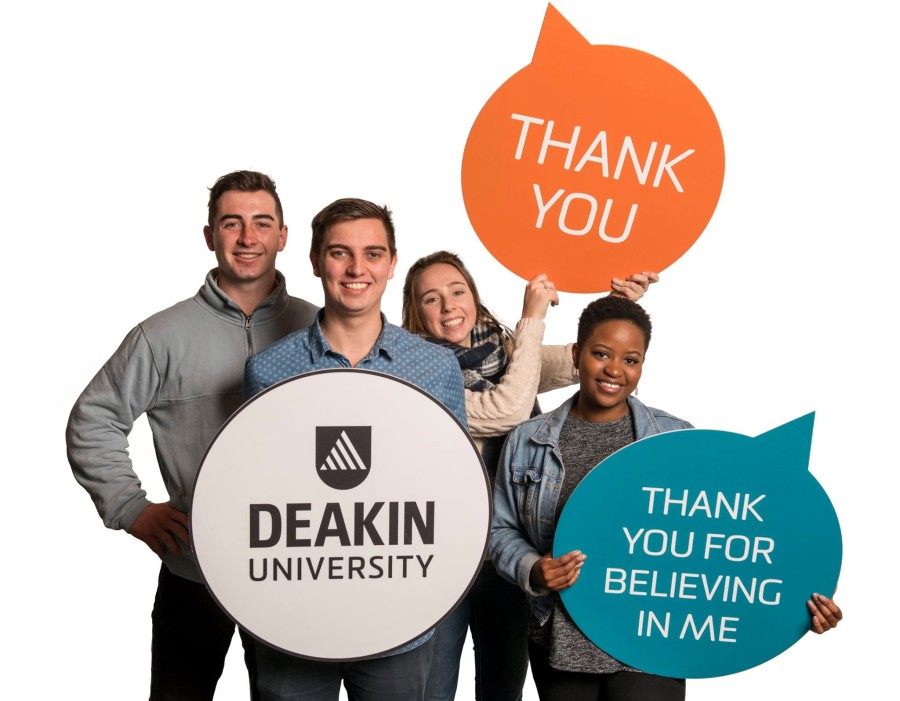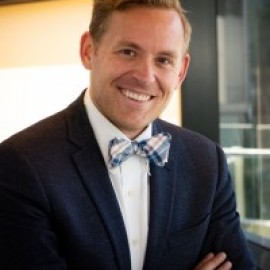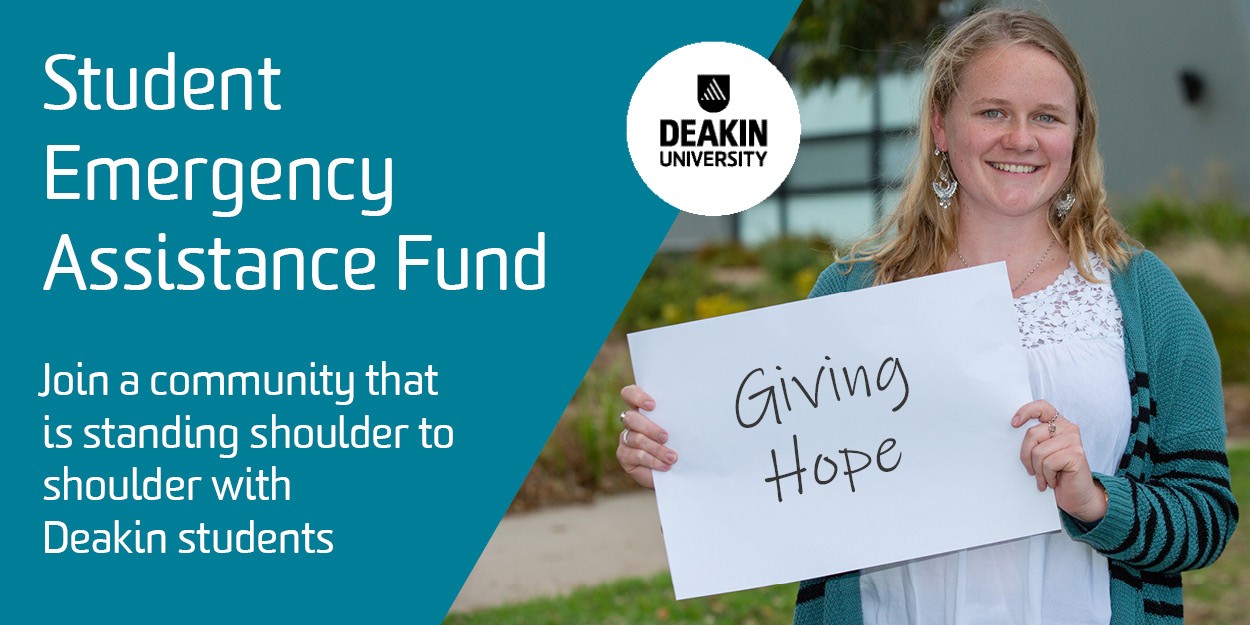
Community and Support: Lessons from Launching an Emergency Fund
The September/October issue of Currents explored how advancement teams are working to raise awareness and support for student wellness. Here, colleagues from Deakin University reflect on community, well-being, and lessons learned from launching an emergency fund for students.
In 2020 and 2021 amid the pandemic, institutions across the globe launched emergency funds for students. Students could use this assistance to cover basic needs like food, rent, or essential technology for their online courses.
These funds supported students’ financial health but also their mental health.
"It was huge to be able to receive financial assistance—and it came from this extended community of donors, alumni, friends, and family that were rallying to support them," says Rachel Weston, Donor Relations Manager at Deakin University in Melbourne, Australia, which launched its Student Emergency Assistance Fund in 2020. "The response back from students was that it was a huge mental boost as well as a financial boost."
During COVID-19, many students lost their jobs: Globally, youth employment dropped by nearly 9% in 2020, according to the International Labour Organization. Research—including a 2021 study of 7,000 university students—shows that financial duress during the pandemic spurred students’ anxiety and other mental health issues.
At Deakin, more than 1,000 students received support through the emergency fund, which raised more than AUD$500,000. Here, three Deakin colleagues share their lessons from introducing the fund and how student support ties to wellness and community.
How did you launch your Student Emergency Assistance Fund?
Jimmy Buck, Chief Advancement Officer: The Student Emergency Assistance Fund came about early on, when we first started working from home in March and April of 2020. As fundraisers we were seeing peers at other institutions raising funds for students facing financial distress. At the same time we were wondering ourselves, "What is the university doing in this space?" In conversations we were having with donors, people were asking about students and how they could help.
I reached out to our registrar at the time, who was responsible for a lot of the student experience work to ask her, “Is there a need? Is there something that's already going on that we could plug into?” It moved very quickly from, “Yes, there is a need; there is an opportunity if there are donors who are willing to support this,” to: here are the channels that can be set up so that those funds can go into the university’s existing pool of funds to help students facing financial distress.

What could students use the funds for and what response did you see from students?
Leanne Lui, Coordinator of Scholarships and Financial Assistance: The university’s always provided funding for emergency financial assistance, but with the start of the pandemic, we were just inundated with applications from students. Having this extra amount of funding come in through donors offered such a peace of mind for students who desperately needed this funding. I think everybody in the university was trying to work out how can we best support these students.
Students could use the funds for whatever they needed: to pay rent, for instance. For a lot of students who didn’t have access to the campus, the funding was there for whatever technology they needed.
It’s important to understand, too, that having the funding available gives us this opportunity to tie students in with other services. Based on what students put in their applications, we can approach them with various support services or opportunities.
Buck: The fund was for any student who needed support. At that point [in the pandemic] here in Australia, our federal government told international students that they should go home. But at Deakin, we took a bold position to invest in our international students, because not all students could get home. The student emergency fund was for any student, not just international students—but there was this acute need [for that] in Australia. People approached us to say: ‘You know, I’m really impressed with what your university is doing. How can I help?’
At Deakin, we take pride in providing education for nontraditional students—those who come to university later in life or are taking advantage of our flexible learning environment. These students may be facing different stressors—[they may be] a working parent who’s trying to study while their kids are also doing home education because of pandemic restrictions.
Weston: We had one student like this who was so grateful for the support that she wanted to thank the community that had donated to the fund. She was doing a law degree, coming to education later in life. She has a child with a disability and a husband with a work injury, and she was trying to hold it all together. She said, “You can’t understand how that small amount was life-changing to me.” She felt the community had supported her.
What response have you seen from donors?
Weston: What’s continued to resonate so much with donors is the cause and the urgency—and that even if the amount doesn’t seem large, it can be the difference between being able to keep studying and not.
Among our appeals and causes for support, this is one that we find we have the greatest response to—whether it’s a 15 dollar donation from a household jar, or a gift from one of our Deakin alumni who’s heard about this need and wanted to give even though they don’t have much to give, or one of our corporate organizations who have been supporting students for a while and can give much larger gifts.
Buck: For our organization and for our donors, this reminded them that students face these challenges pandemic or not. There will always be a need for financial assistance like this for students. And sometimes something as simple as replacing a laptop could be the deciding factor of whether they continue with their studies or whether they withdraw.
Hopefully this will be something our donors will continue to want to support. We want to provide access to education for anybody who wants it. If a $500 dollar grant or $100 or $1,000 dollars can keep them in education, we want to do that—and if donors can help in that, even better.

"When you support a student with a donation, you’re not just supporting them financially—you’re indicating that you’re backing them. For a $500 dollar grant, a hundred people could have contributed small amounts to it, each saying to that one student, 'I believe in you.'"
What do you see as the tie between helping students financially and supporting their mental health?
Lui: Students were some of the first to lose their jobs in the hospitality industry. In so many of the applications we read, students would say: “I don’t know how I’m going to pay my rent. I don’t know how I’m going to eat. How am I going to pay my bills? It’s causing me anxiety.” Having that funding available could clearly help assist them with issues with mental health and tie them in with other services as well.
Weston: COVID caused so much stress for everybody. If you have some stability with your education, though, and were able to get some assistance—even if there was other chaos in your life happening—this area of your life could stay OK. You couldn’t leave your house or see your family, and people were dealing with so much on top of having to worry if they could continue their education. Being able to keep going contributed so much to students’ mental health.
Buck: What we’ve found is when you support a student with a with a donation, you’re not just supporting them financially—you’re indicating that you’re backing them. For a $500 dollar grant, a hundred people could have contributed small amounts to it, each saying to that one student, “I believe in you; I care about you; I support you.”
It's not just the money that they're investing, but also the act of giving. Giving indicates for that individual: “I care about your success and I want to back you.”
What’s a lesson you learned from this project and the pandemic?
Buck: Don't be afraid to ask. At the time, especially with all the uncertainty in the world, there were some people who were uncomfortable with the notion of us asking donors for money. But if we can’t ask for support in our greatest time of need, when can we ask for support?
We’re not asking for support for ourselves; we’re asking on behalf of others. And that’s a privilege.
Weston: We already knew this, but we really saw the power of kindness and what can happen when strangers connect, with the emotions evoked from the person giving and person receiving. When we were all so isolated or couldn’t see our families, the university community could be there and support people.
Lui: For me, the lesson is making the student the center of all our decision-making. It's the whole reason why we're here. It's never smooth sailing; we know there’ll be ups and downs but that we’ll have assistance there to help students in a time of need.

About the author(s)
Meredith Barnett is the Managing Editor at CASE.


